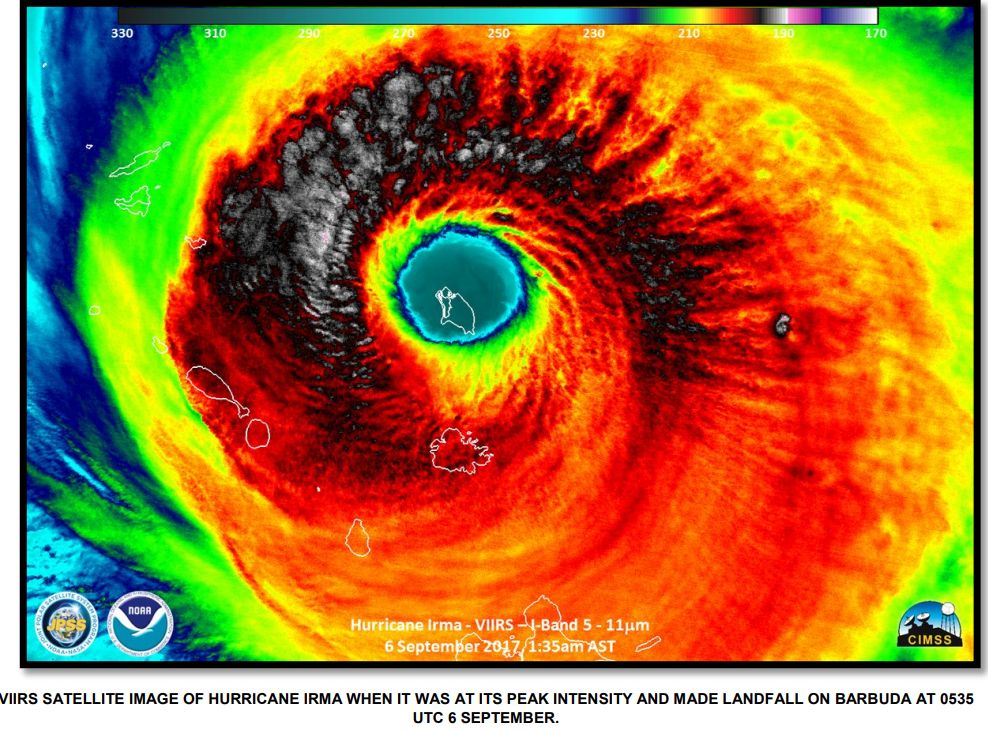Hurricane Irma made landfall this week in Florida 6 years ago on Sept. 10, 2017.
What You Need To Know
- It’s the six-year anniversary of Irma
- Irma made two landfalls in Florida
- It was one of the costliest Atlantic hurricanes
- There were 123 deaths in Florida because of Irma
It all started with a tropical wave in the eastern Atlantic Ocean on Aug. 27, 2017.
Irma became a hurricane and strengthened to a Category 5 in the Atlantic. At one point, Irma’s winds were 185 mph.
Infrared satellite image of Hurricane Irma when it was at peak intensity. (NOAA)
Irma made five landfalls in the Caribbean before making a turn toward Florida.
On Sept. 10, 2017, Irma made landfall in Cudjoe Key as a Category 4 hurricane.
It made its way up to Southwest Florida and made another landfall near Marco Island as a Category 3 hurricane, leaving damage behind in cities like Naples and Fort Myers.
Then it gradually weakened and moved north toward Tampa.
Initially, the water levels in Tampa Bay dropped because of the strong offshore winds on the north side of Irma’s circulation. Many people were amazed that for a short period, the bay was dry.
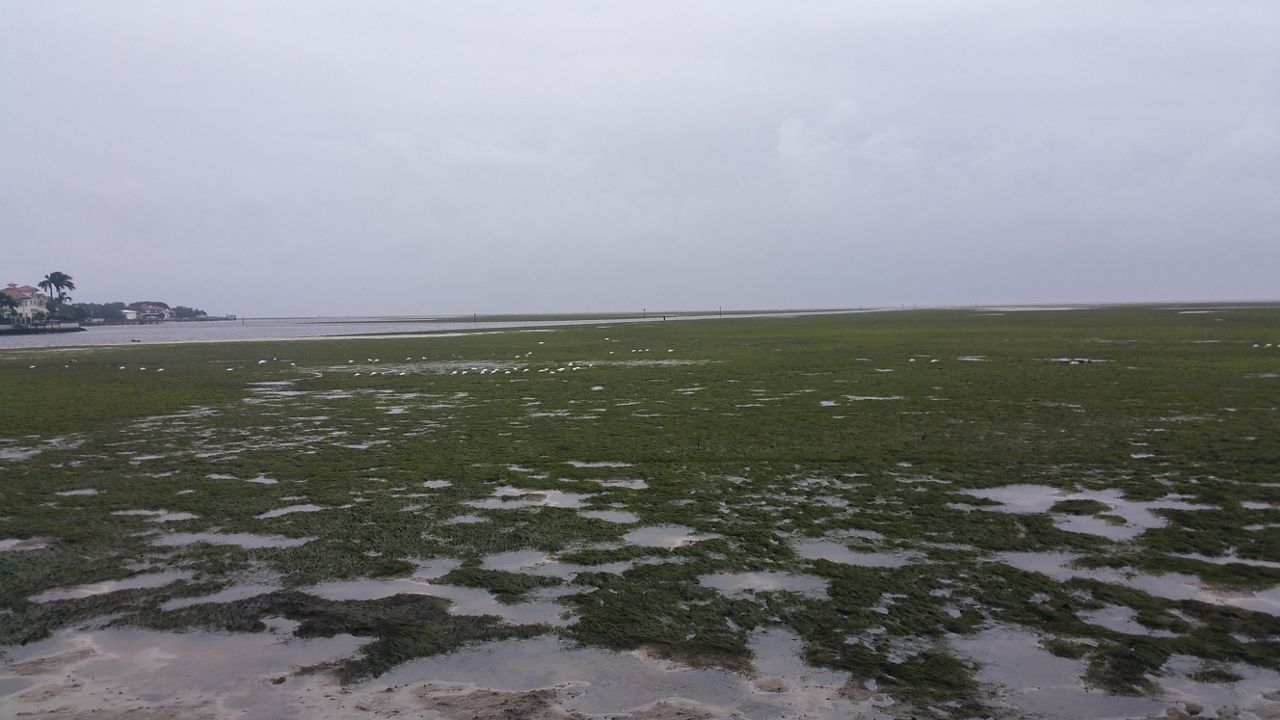
(Spectrum News)
Even though Irma was weakening, it still brought damaging winds to our area into the morning hours of Sept. 11.
The eye of Irma moved north through Polk County, then toward eastern Citrus County before moving to North Florida and Georgia.
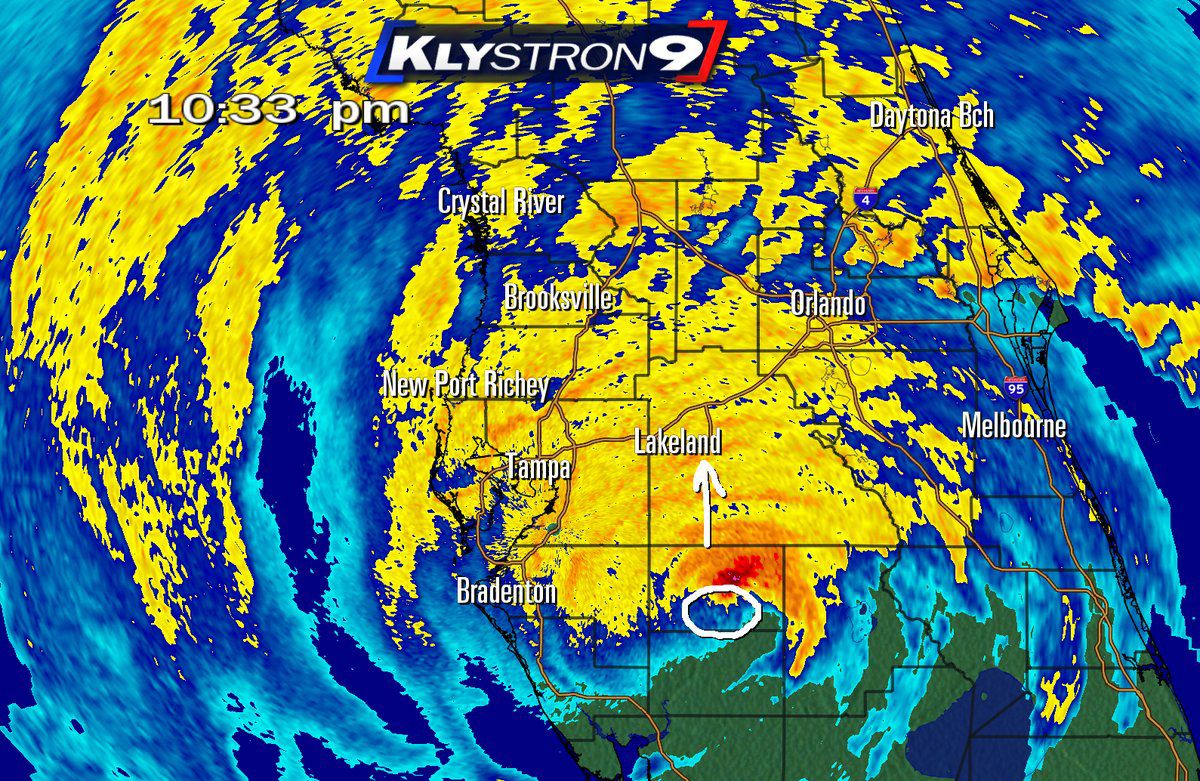
The Bay Area didn’t have any sustained hurricane-force winds, but there were wind gusts of 60 to 90 mph.
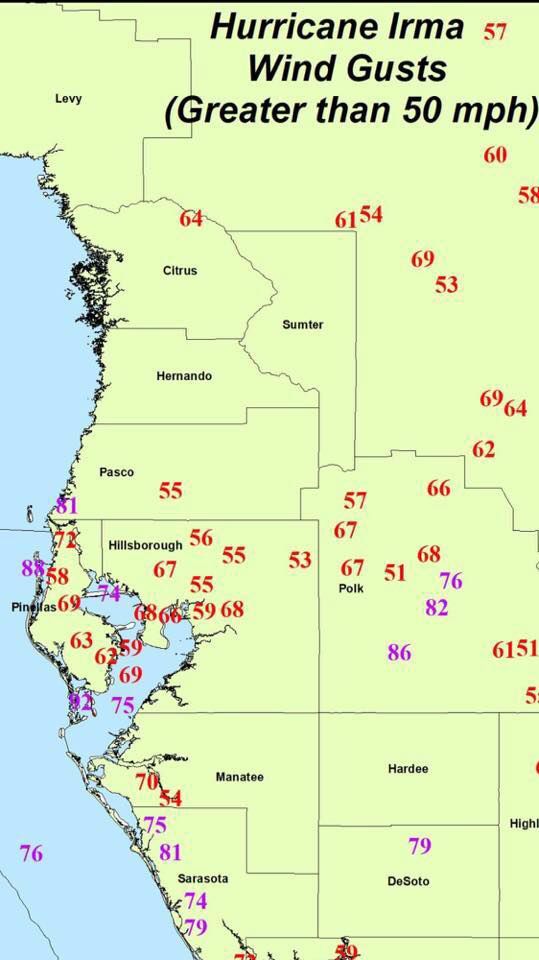
(NWS Tampa)
Power was out for weeks in some places.
There were 21 confirmed tornadoes in Florida. While most of the tornadoes were on the east coast, an EF2 tornado hit Polk City.
We had 5 to 15 inches of rain across the state.
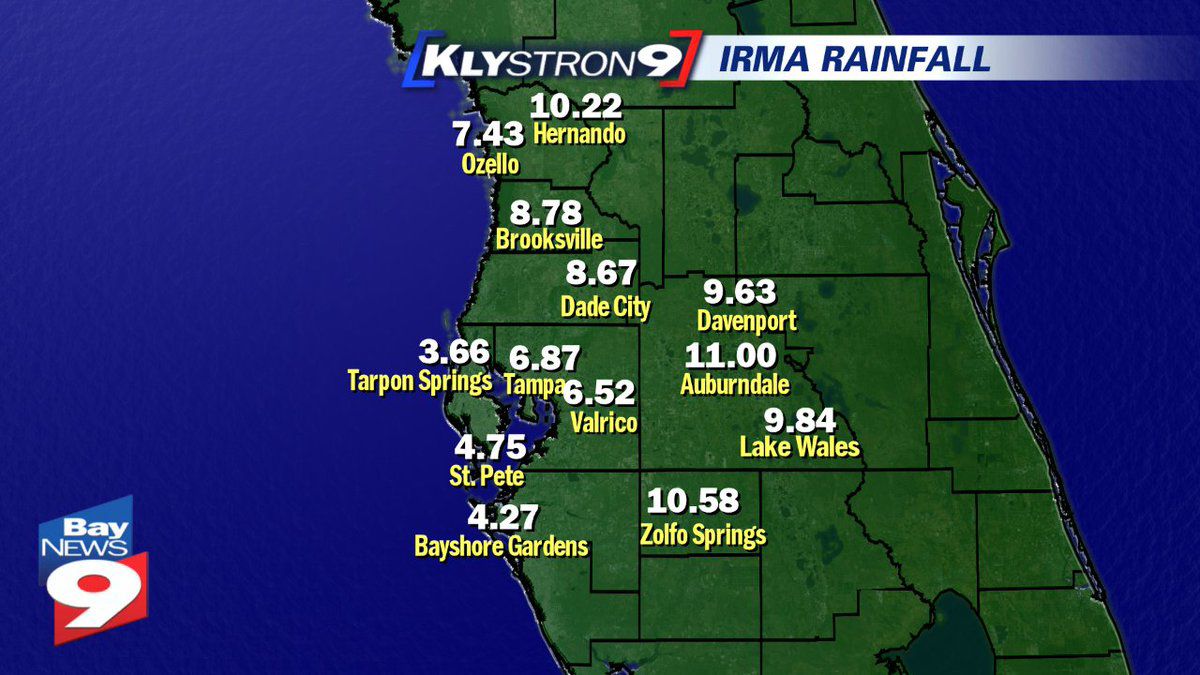
The highest rainfall totals occurred in the southwestern and eastern parts of the state where the strongest bands moved through.
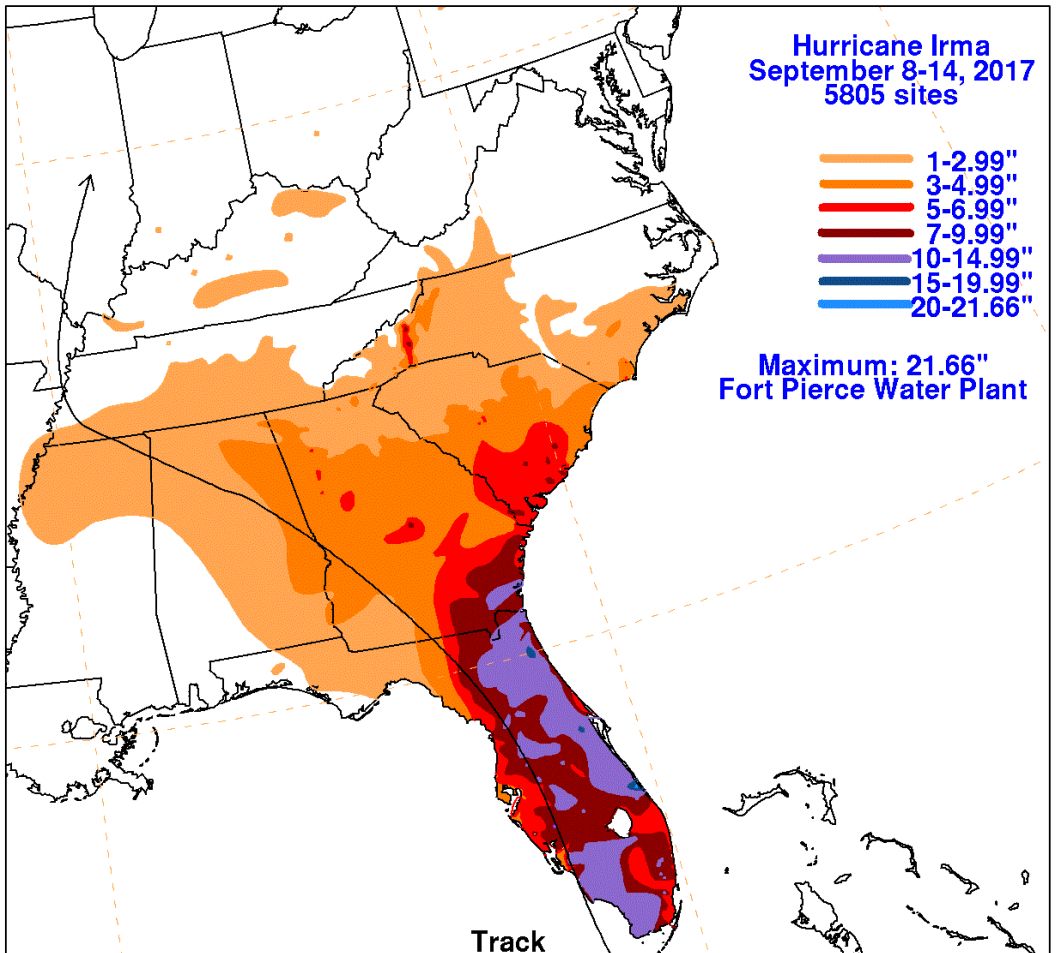
A record 6.5 million Floridians evacuated ahead of Irma, and thousands headed to shelters.

Irma was responsible for over 100 deaths in the United States. Most of the deaths happened in Florida.
Damage in the U.S. because of Irma was estimated $77 billion in 2017, equal to $95.4 billion in 2023.
Track of Irma in Florida
Irma moved up the western side of the Florida Peninsula and weakened from a Category 4 storm around Cudjoe Key to a Category 1 storm by the time it was just southeast of Tampa.
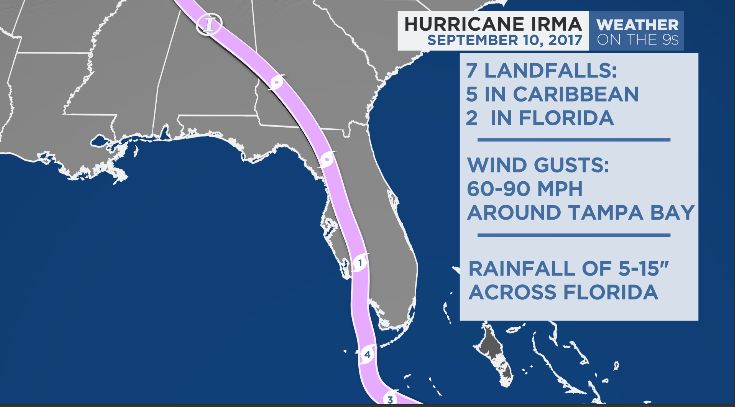
Peak wind gusts
Irma brought wind gusts well over 100 mph in parts of southwest Florida, including a gust of 142 mph near Naples.
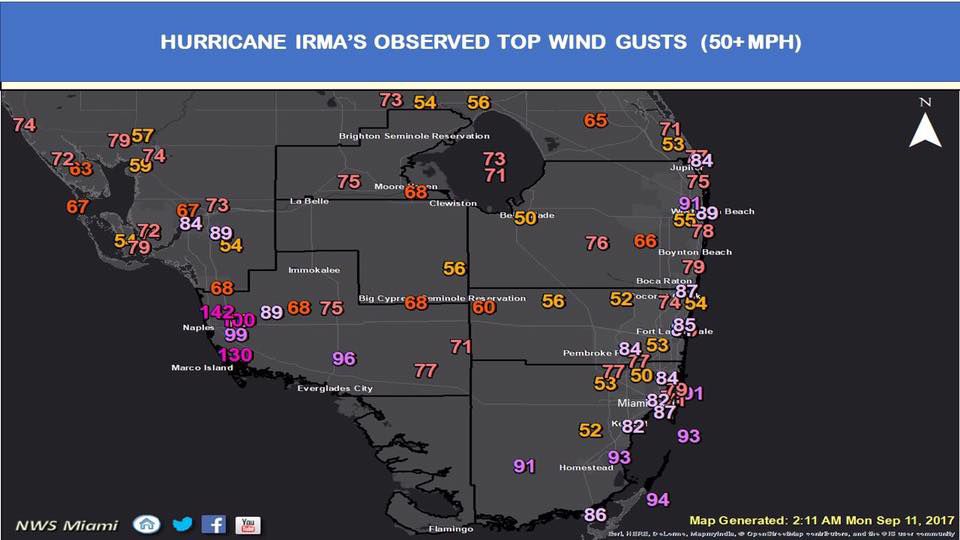
(NWS Miami)
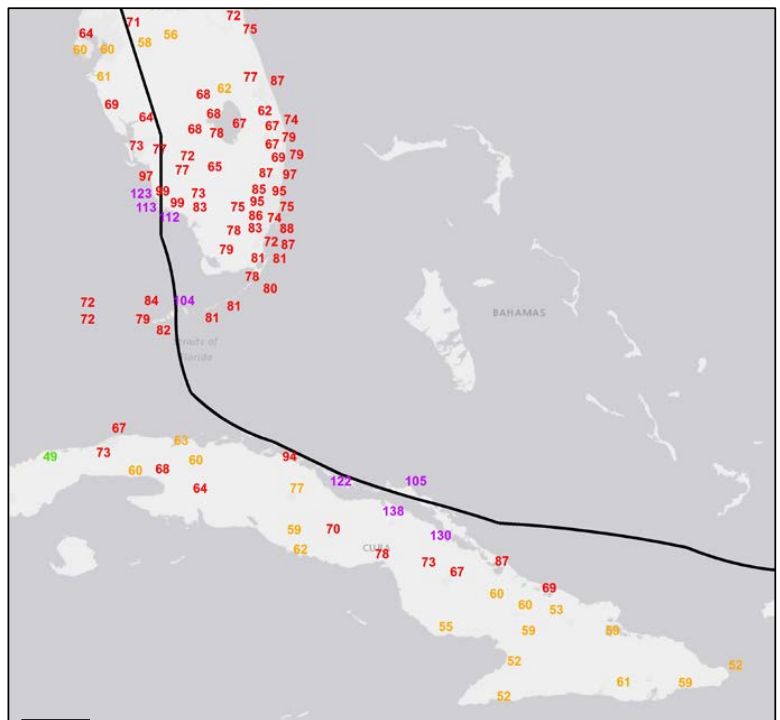
Our team of meteorologists dives deep into the science of weather and breaks down timely weather data and information. To view more weather and climate stories, check out our weather blogs section.

